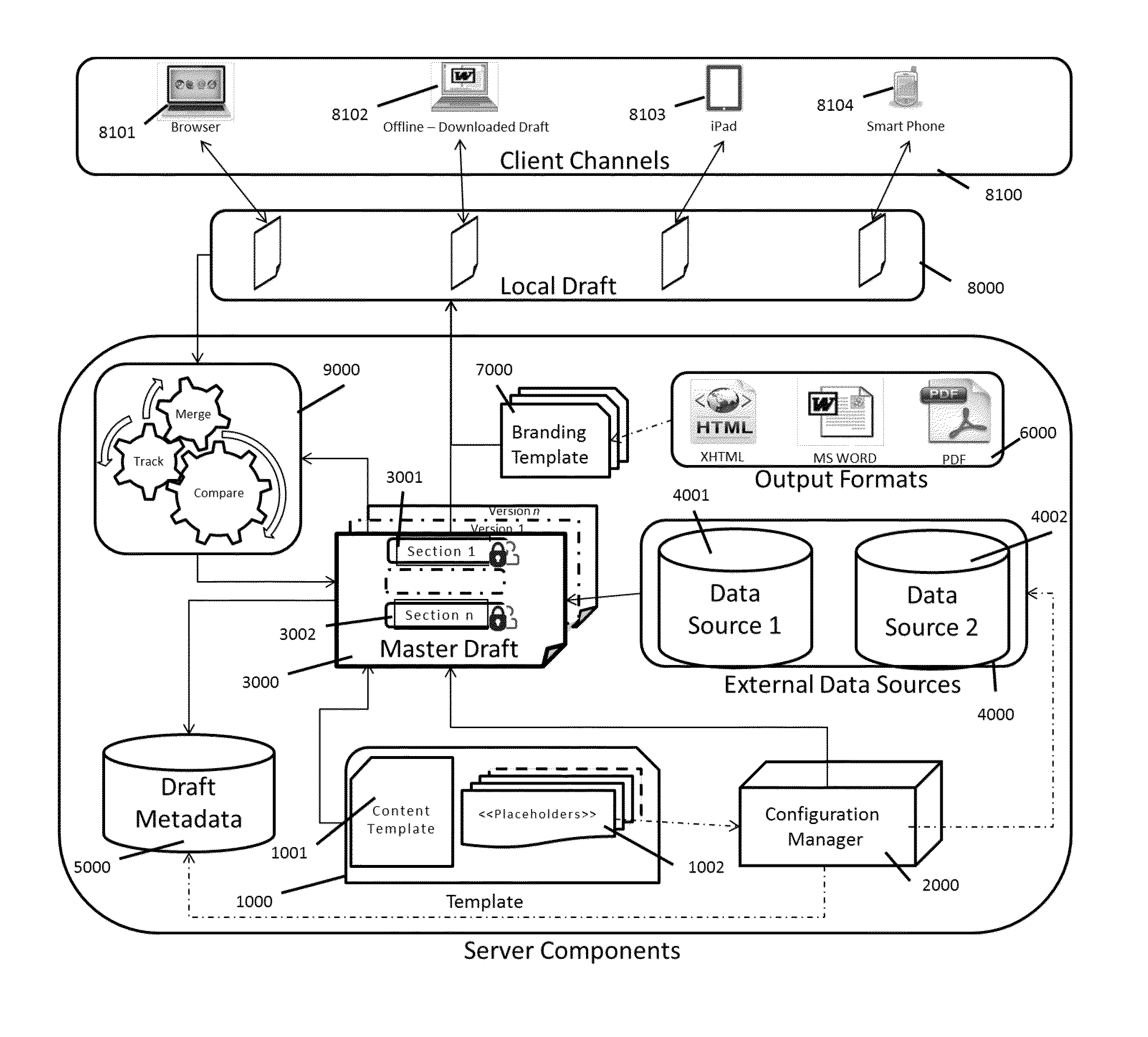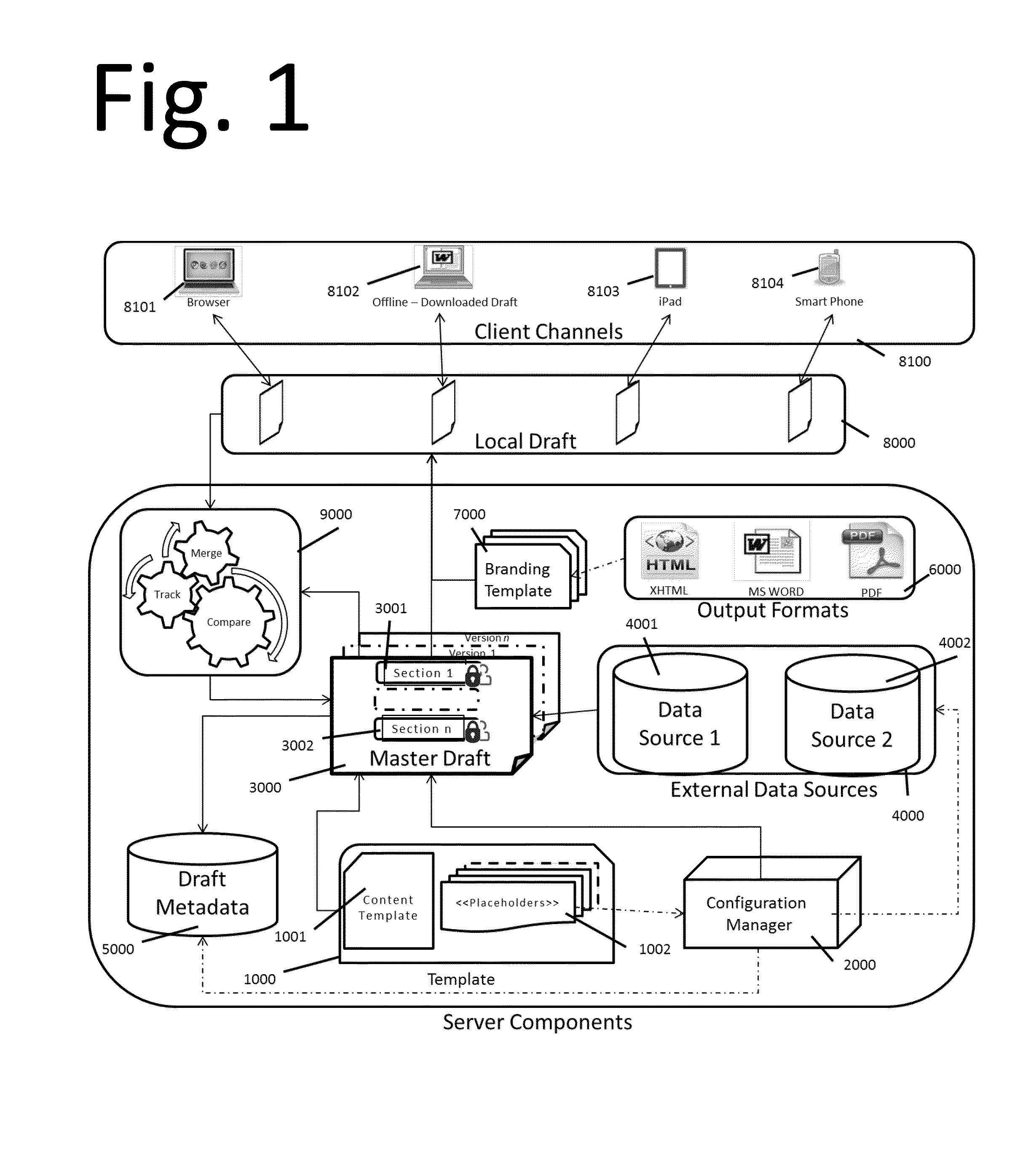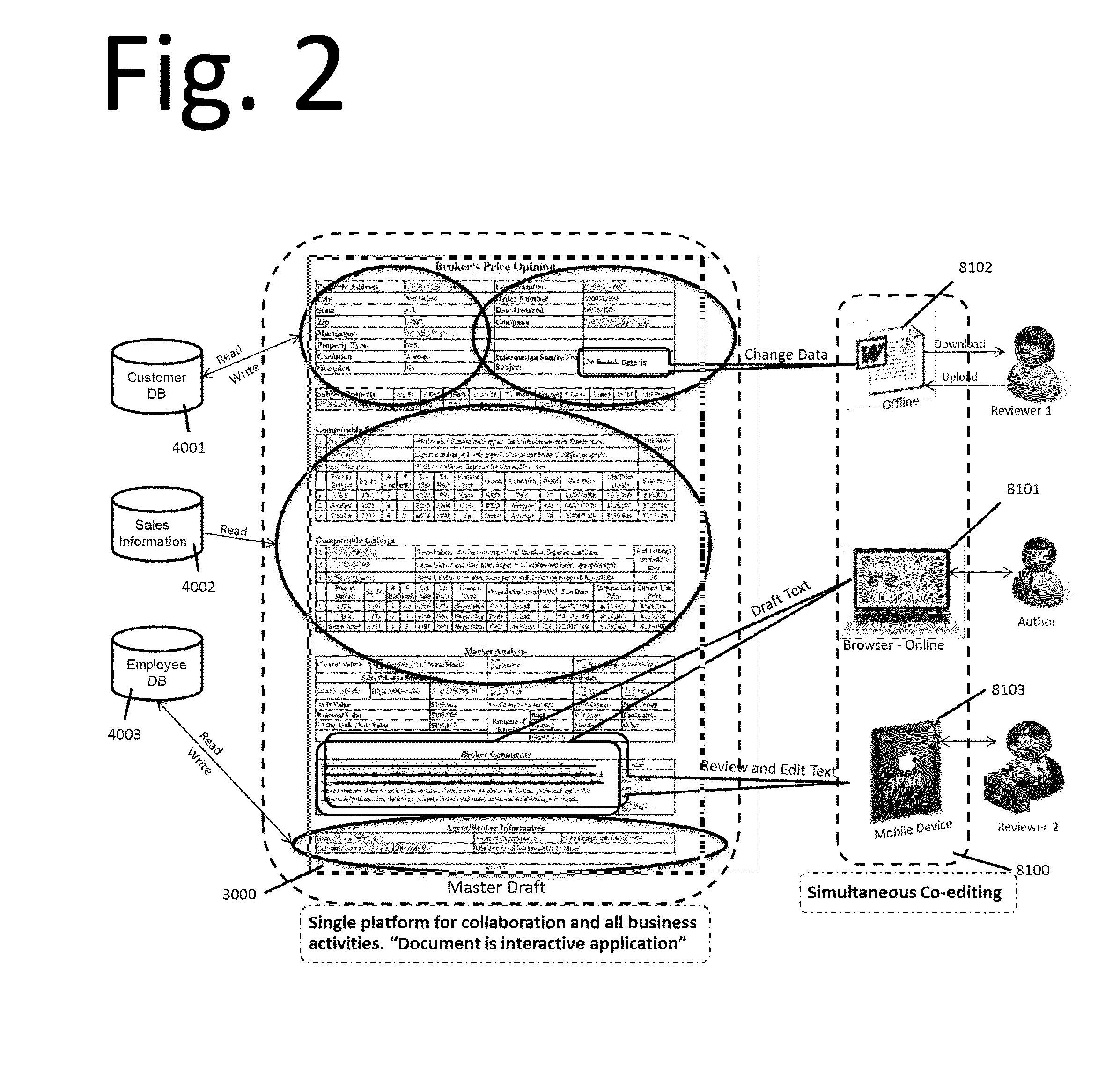Transforming a document into web application
a document and web application technology, applied in the field of document transformation into web applications, can solve the problems of high inefficiency and error prone manual processes, high inefficiency and non-compliance, and the current processes of emailing documents around and reconciling or even checking in checkout from a collaboration workspace are highly inefficient and error-prone, so as to improve speed, transparency and compliance
- Summary
- Abstract
- Description
- Claims
- Application Information
AI Technical Summary
Benefits of technology
Problems solved by technology
Method used
Image
Examples
Embodiment Construction
[0019]In the following detailed description, references are made to the accompanying drawings which form a part hereof, and in which are shown by way of illustrations embodiment in which the invention may be practiced. It is to be understood that other embodiments may be utilized and structural or logical changes may be made without departing from the scope of the present invention. Therefore, the following detailed description is not to be taken in a limiting sense.
[0020]Various operations may be described as multiple discrete operations in turn, in a manner that may be helpful in understanding embodiments of the present invention; however, the order of description should not be construed to imply that these operations are order dependent.
[0021]Embodiments of the present disclosure describe how a document can be transformed into a web application. FIG. 1 Illustrates example architecture of how a document can be transformed into a web application. The transformation begins with defi...
PUM
 Login to View More
Login to View More Abstract
Description
Claims
Application Information
 Login to View More
Login to View More - R&D
- Intellectual Property
- Life Sciences
- Materials
- Tech Scout
- Unparalleled Data Quality
- Higher Quality Content
- 60% Fewer Hallucinations
Browse by: Latest US Patents, China's latest patents, Technical Efficacy Thesaurus, Application Domain, Technology Topic, Popular Technical Reports.
© 2025 PatSnap. All rights reserved.Legal|Privacy policy|Modern Slavery Act Transparency Statement|Sitemap|About US| Contact US: help@patsnap.com



